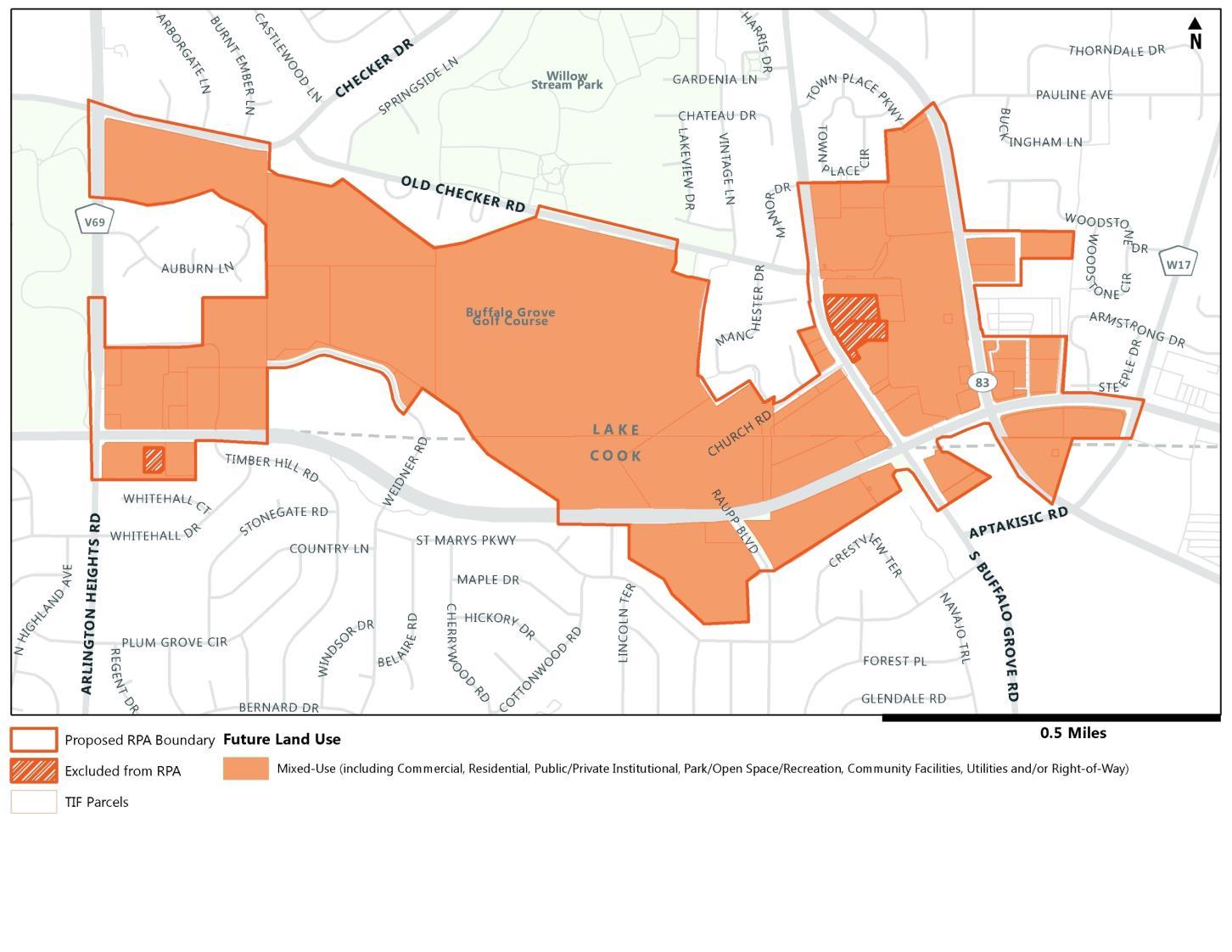Appendix 2: Glossary Factors for Vacant Land – One Factor Test Under the provisions of the “blighted area” section of the Act, if the land is vacant, an area qualifies as “blighted” if one (1) or more of the following factors is found to be present to a meaningful extent. • • • • • •
The area contains unused quarries, strip mines or strip mine ponds; The area contains unused rail yards, rail track, or railroad rights-of-way; The area, prior to its designation, is subject to or contributes to chronic flooding; The area contains unused or illegal dumping sites; The area was designated as a town center prior to January 1, 1982, is between 50 and 100 acres, and is 75% vacant land; or The area qualified as blighted prior to becoming vacant.
Factors for Vacant Land – Two Factor Test Obsolete Platting of Vacant Land. This includes parcels of limited or narrow size, or configurations of parcels of irregular size or shape that would be difficult to develop on a planned basis and in a manner compatible with contemporary standards and requirements, or platting that failed to create rights-of-ways for streets or alleys or that created inadequate right-of-way widths for streets, alleys or other public rights-of-way, or that omitted easements for public utilities. Diversity of Ownership. Diversity of ownership is when adjacent properties are owned by multiple parties. This factor applies when diversity of ownership of parcels of vacant land is sufficient in number to retard or impede the ability to assemble the land for development. Tax and Special Assessment Delinquencies. Tax and special assessment delinquencies exist or the property has been the subject of tax sales under the Property Tax Code within the last five years. Deterioration of Structures or Site Improvements in Neighboring Areas adjacent to the Vacant Land. Evidence of structural deterioration and area disinvestment in blocks adjacent to the vacant land may substantiate why new development had not previously occurred on the vacant parcels. Environmental Contamination. The area has incurred Illinois Environmental Protection Agency or United States Environmental Protection Agency remediation costs for, or a study conducted by an independent consultant recognized as having expertise in environmental remediation, has determined a need for, the cleanup of hazardous waste, hazardous substances, or underground storage tanks required by state or federal law, provided that the remediation costs constitute a material impediment to the development or redevelopment of the redevelopment project area. Lack of Growth in Equalized Assessed Value. The total equalized assessed value (“EAV”) of the proposed redevelopment project area has declined for three (3) of the last five (5) calendar years prior to the year in which the redevelopment project area is designated; or is increasing at an annual rate that is less than the
SB Friedman Development Advisors
39



